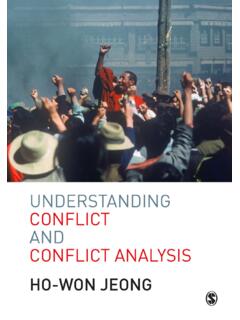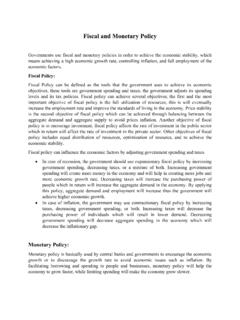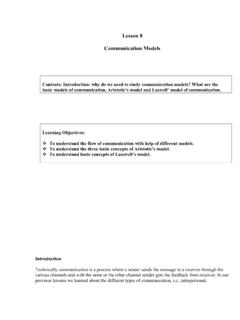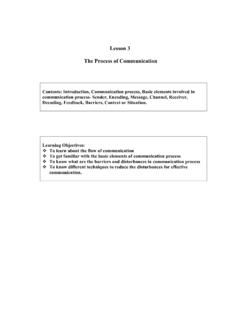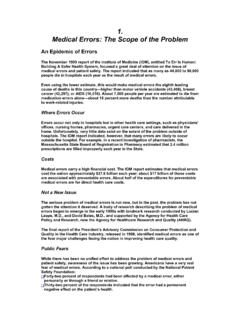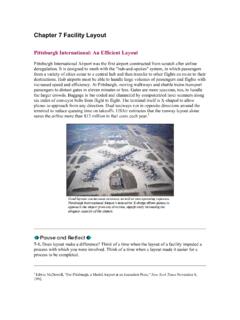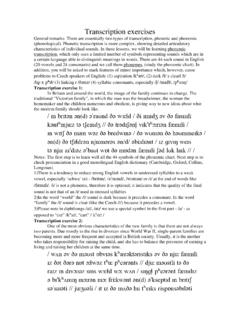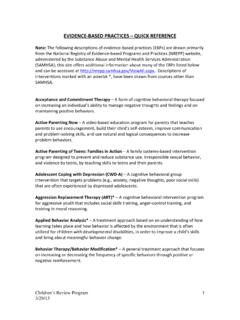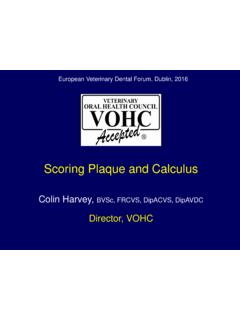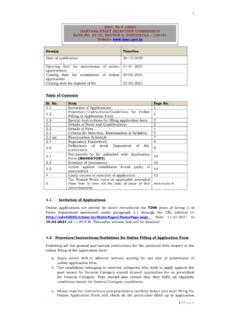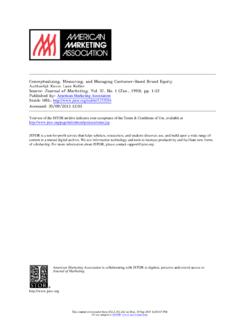Transcription of Psychological Theories of Crime and Delinquency
1 Journal of Human Behavior in the Social Environment, 21:226 239, 2011 Copyright Taylor & Francis Group, LLCISSN: 1091-1359 print/1540-3556 onlineDOI: Theories of Crimeand DelinquencyMEGAN MOORES chool of Social Welfare, University of California at Berkeley, Berkeley, California, USAS everal Psychological Theories have been used to understand crimeand Delinquency . This literature review categorizes theseperspec-tives into five areas, provides a brief overview of each, andan-alyzes and synthesizes the relevant, elements within each major perspectives reviewed are learning Theories , intelligencetheories, personality Theories , Theories of psychopathy,and cogni-tive and social development Theories .
2 These are included inthereview because they met the following criteria: (1) major tenetsof the theory had been used to explain Crime , (2) the theory wasconsidered significant by scholars in several disciplines, includingpsychology, and (3) the assumptions in the theory included afocuson the individual or internal processes or Crime of Delinquency , psychology, theoryINTRODUCTIONC riminology is defined by Webster s dictionary as the scientific study ofcrime as a social phenomenon, of criminals, and of penal treatment ( ). In one criminology text-book, Sheley (2000) defined the term more narrowly as the scientific studyof Crime as a social phenomenon and reflected the dominantrole soci-ology has played in the study of Crime and Delinquency (p.)
3 1).However, Psychological Theories have also been influential in shaping the way societythinks about Crime and Delinquency and in shaping policies that relate tothese issues (Sampson & Laub, 2003). Though there is overlapbetweenAddress correspondence to Megan Moore, University of California at Berkeley, 120 Haviland Hall #7400, Berkeley, CA 94720-7400, USA. Theories of Crime and Delinquency227sociological and Psychological Theories , this literaturereview identifies andsynthesizes five major Theories in the field of psychology related to crimeand review is divided into the following categories: learning Theories ,intelligence Theories , personality Theories , Theories ofpsychopathy, and cog-nitive and social development Theories .
4 These categories represent a synthe-sis of Psychological concepts that help to explain Crime anddelinquency(Shoemaker, 2005; Siegel, Welsh, & Senna, 2006). In addition to describ-ing the elements of each theory, the review concludes with a figure thathighlights the concepts and illustrates how they relate to one methods were used to identify the literature reviewed for this , a computer search was completed using the Universityof California-Berkeley online library databases and Google Scholar. Second, an expertin the area was consulted to provide additional resources. The UC librarydatabases searched include PsycINFO and PsycARTICLES; these core psy-chological databases provide search information for all CSA Illumina SocialSciences databases.
5 In addition, the University of California Melvyl bookand article database was searched because it includes all ofthe UC hold-ings ( , books, articles, magazines, and governmental publications). Initialsearches included the following keywords: Psychological theory and Crime , Psychological theory and Delinquency , Crime and Delinquency ,theory anddelinquency,theory and Crime ,IQ and Delinquency , and truncated termspsych*and theor*and delinqu*,psych*and delinqu*, andpsych* and theor*and crim*. After consultation with a scholar in the field, additional searcheswere completed to locate publications by the following key theorists: TravisHirschi, John Laub and Robert Sampson, Terrie Moffitt, Jerome Kagan, andJerry Patterson.
6 Once several key articles were identified, frequently citedarticles were also searched and are several limitations in the search methods listed here, especiallywith regard to the overlap between the Psychological and sociological the-ories of Crime and Delinquency . As the search focused primarily on psycho-logical Theories , those Theories with extensive sociological overlap were notreviewed. A second limitation relates to the brevity of the literature review;therefore it does not represent a comprehensive review of all psychologicaltheories in this Theories of Crime and DelinquencyTheories of Crime and Delinquency tend to use either macro- or micro-levelsof analysis.
7 Typically, the field of sociology has addressed Crime and delin-228M. Moorequency at the macro-level, primarily looking for societal and environmentalinfluences that lead to criminal behavior. Psychological Theories tend toaddress Crime and Delinquency at the individual level, primarily identifyingindividual differences that lead to criminal behavior. Although debates aboutthe merits of micro- and macro-levels of analysis still exist, many modernstudies of Crime and Delinquency aim to identify multiple contributing factorsand often attempt to explain both micro- and macro-influences on Psychological theorists attempt to provide a framework foridentifying the correlational relationships between Psychological variables(pathology) within a person and that person s delinquent behavior whileothers attempt to understand contingencies responsible for maintainingnon-conforming behavior labeled deviant.
8 Deviance from this perspectiveis understood as ways, which the person has learned, of coping withenvironmental and self-imposed demands (Bandura, 1969,p. 2). This reviewbegins with an overview of learning THEORIESL earning Theories represent the study of circumstances under which a re-sponse and a cue stimulus become connected (Miller & Dollard, 1941, p. 1);they have been discussed in the literature since the 19th century. The firstempirical studies of learning have been attributed to Edward Thorndike(Pavlov, 2010/1927). Thorndike conducted animal studies demonstrating acat could learn to associate the behavior of getting out of box with obtain-ing food that was placed outside the box and hasten the task over time(Thorndike, 1898).
9 This work established an important principle that wouldinfluence future research on learning (Kazdin, 1989). He established the Lawof Effect, which states that consequences that follow behavior help learning(Kazdin, 1989, p. 10). Around the same time, but without knowledge ofThorndikes work, Ivan Pavlov was conducting studies on a different typeof learning (see Pavlov, 2010/1927). He was measuring and conditioningsalivation and other physiological reflexes in dogs to respond to neutralstimuli (see Pavlov, 2010/1927), later called classical conditioning. Focusingon the consequences of behavior rather than the eliciting stimuli, Skinner(1938) postulated that behavior has an influence on the environment.
10 Thefrequency of behavior is determined by environmental consequences andcan be altered by modifying the environmental conditions (Skinner, 1963).He explicated operant were more interested in internal determinants of behavior. Rotter(1954) proposed a social learning theory of personality that emphasizedthe role of learned behavior and experience in the interaction of personand environment determinants of behavior. Citing the influential work ofKantor (1924) who proposed that behavior resulted from the interaction ofthe person and stimulus in environment and Lewin (1935) who suggestedPsychological Theories of Crime and Delinquency229that behavior is determined by the person and their environment in time andspace, the thrust of this theory focused on how behavior is shaped by expe-rience.
